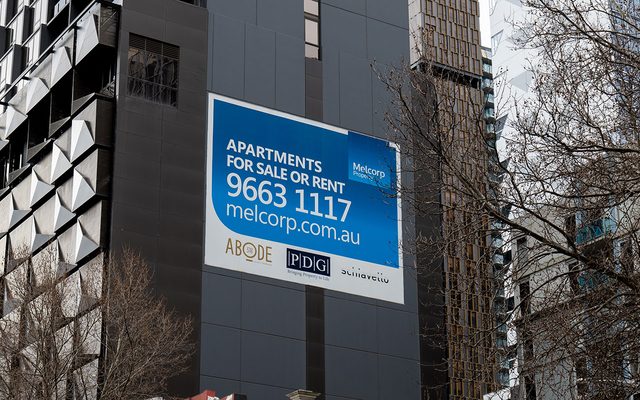This article is from the Australian Property Journal archive
THE prospect of an interest rate cut in 2024 is beginning to fade, as rental inflation accelerated in the March quarter to its worst level in 15 years and the consumer price index (CPI) remained stubbornly high.
Australian Bureau of Statistics (ABS) data shows the CPI rose 1.0% in the March quarter, higher than the 0.6% increase in the December period.
Annually, the CPI rose 3.6% to the March quarter. While prices continued to rise for most goods and services, annual CPI inflation was down from 4.1% last quarter and has fallen from the peak of 7.8% in December 2022.
The most significant price rises in the March quarter were rents (up 2.1%), secondary education (6.1%), tertiary education (6.5%) and medical and hospital services (2.3%).
“The 1% CPI increase for the March quarter is a set-back after the promising 0.6% rise for the December quarter. It puts inflation well above the trajectory needed to return to the Reserve Bank’s target band of between 2% and 3% by the end of next year,” said Canstar’s group executive, financial services, Steve Mickenbecker.
“Three months ago the 0.6% CPI increase implied a return to the mid-point of the Reserve Bank’s target in 2025. The 1% increase for the March quarter will leave the Reserve Bank concerned that we have fallen off the wagon.”
The Reserve Bank held interest rates again at 4.35% at its last meeting on the back of more favourable inflation and economic data that suggested its 13 rate hikes since May 2022 had been making the intended impact. A shift in the language coming from the RBA and governor Michele Bullock was described by analysts around interest rates as “dovish”, although Bullock did retain a firm line that the board “can’t rule anything in or out” on future movements.
Westpac economists yesterday pushed out the timing of a rate cut to November 2024, in line with the current forecasts from NAB and ANZ, which have not changed. CBA is now the only big four bank expecting the first cash rate cut to come earlier in the year, in September, although they have said the risk lies with it coming at the following meeting scheduled for November.
“With the monthly CPI indicator now in reverse, after three months of sitting stationary, there are plenty of signs the last leg of this saga could be the longest,” said RateCity.com.au’s Sally Tindall.
“The RBA won’t be hitting the panic button, and it certainly won’t be reverting back to rate hikes on the back of these inflation figures, however, it will be peeling back every layer of this ABS data to see where the risks lie.”
The monthly repayment for a $600,000 home loan was around $2,523 in April 2022, on the eve of the RBA’s rate hikes, and now sits at $4,085.
Rent inflation highest since 2009
Annual rent inflation lifted to 7.8%, its highest reading in 15 years. Rents have been surging and vacancies are hovering around historic lows amid a severe shortage of housing supply.
Master Builders Australia CEO Denita Wawn said the worrying intensification of rental pressures follows the worst year in over a decade for new home-building starts, and is in stark contrast to the overall rate of inflation falling to its lowest level since late 2021.
“The answer is to increase the supply of new homes,” Wawn said.
“Higher density home building starts sank to a 12-year low during 2023 which is only driving rental inflation further.”
Master Builders’ latest set of forecasts indicates that there will 110,000 fewer new homes built than needed to meet the national cabinet’s National Housing Accord, which kicks off in July and aims to deliver 1.2 million “well-located” homes over five years. It will be run alongside the $10 billion Housing Australia Future Fund, which has the goal of 30,000 social and affordable homes, and National Housing Accord Facility, targeting 10,000 affordable homes. The up-and-running Social Housing Accelerator has the aim of delivering 4,000 new social homes.
These are in addition to state government programs.
However, the targets are considered farfetched by analysts amid a severe labour shortage, current low approval rates and planning red tape.
Wawn said that to boost housing supply, “we have to make it more attractive to build – that means not removing tax incentives like negative gearing or capital gains tax, and reducing the time and cost of building”.
A report this week from Anglicare showed that less than 300 of the 45,000 rental listings currently advertised across Australia are affordable for a person earning a full-time minimum wage, and affordable rentals are yet more scarce for those on the pension or JobSeeker – prompting Anglicare to call for fixes beyond more housing supply, including phasing out both negative gearing and capital gains tax, lifting social security payments, to assist those on low incomes find affordable housing.




